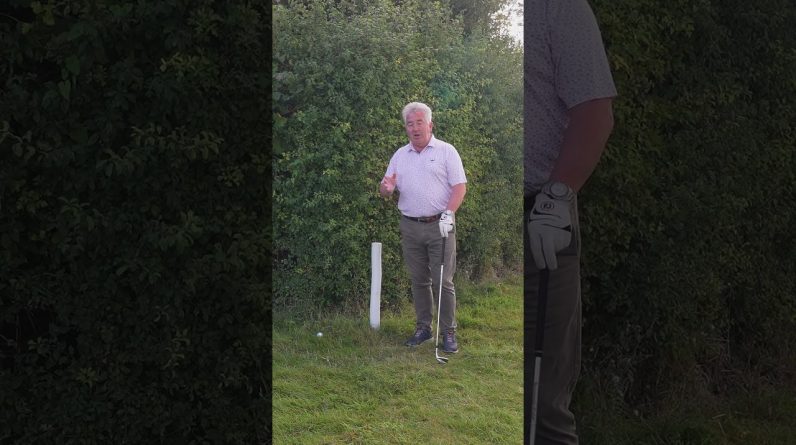Go Golfers Swing and a Miss!!! Avoiding the Common Golf Blunders
If you’re new to golf or watching from the sidelines, you’ve probably seen the infamous “swing and a miss” moments — those times when the golfer swings hard but completely misses the ball or mishits it badly. These instances can be frustrating, especially for beginners trying to learn the ropes.The good news? Most of these mistakes are entirely avoidable with the right knowledge and practice.
Why Do Go golfers Swing and Miss?
“Swing and a miss” situations happen for a variety of reasons, including improper technique, tension, and lack of coordination. Understanding why these misses happen is the first step to improving your golf game.
- Poor Swing Mechanics: Swinging too fast or too slow can throw off coordination and timing.
- improper Grip: A grip that’s too tight or too loose affects club control and accuracy.
- Incorrect Ball position: Ball placement can drastically impact where you strike the ball.
- Over-swinging: Trying to hit the ball too far frequently enough leads to loss of control.
- Lack of Focus: Taking your eye off the ball or poor concentration can cause a miss.
Common Beginner Golf Swing Mistakes
Beginners often fall into the trap of developing bad habits that led to “bad golf” results. Here’s a detailed look at the most frequent mistakes and how to avoid them:
| Mistake | Cause | Solution |
|---|---|---|
| Hitting the Ground First (Fat Shots) | Swinging too steep or poor angle of attack | Focus on smooth,shallow swings and proper ball position |
| Hitting Thin Shots | Striking too high on the ball | Keep your weight balanced and maintain eye contact with the ball |
| Over-swinging | Trying to hit the ball too hard | Practice controlled,consistent swings for better accuracy |
| Chicken Wing | Early elbow bending during downswing | Keep arms extended and maintain proper form |
| swaying Hips | Poor lower body control | Stabilize your lower body; rotate hips instead of sliding |
Practical Tips to Avoid a Swing and a Miss
Improving your golf game starts with refining your basics and consistently practicing good habits. Here are essential tips to help reduce misses and improve your swing:
- Perfect Your Grip: A neutral grip provides better control and power. Avoid gripping the club too tight or too loose.
- Ball position is Key: Place the ball so it aligns with the club you’re using — generally forward in your stance for drivers and mid-position for irons.
- Stay Relaxed: An overly tense body leads to erratic swings. Take deep breaths and loosen your muscles before swinging.
- Watch Your Tempo: A smooth and consistent tempo helps maintain control and accuracy during your swing.
- Focus on Footwork: Balance your weight efficiently; avoid swaying hips and instead practice hip rotation.
- Practice with Purpose: Use drills that simulate actual swings instead of random hitting. As an example, try the “slow motion” swing to build muscle memory.
- Keep Your Eye on the Ball: This timeless advice remains critical; focus on the ball throughout the entire swing until after impact.
Case study: How a Beginner Improved from “Swing and a Miss” to Solid Shots
Meet Jake, a 35-year-old beginner who struggled with frequent swings and misses during his first few rounds of golf. His initial frustration turned into motivation to learn the fundamentals. Here’s what jake did differently:
- Enrolled in a beginner’s golf clinic to understand swing basics.
- Regularly practiced grip and ball placement techniques at the driving range.
- Used video analysis to correct his hip movement and avoid swaying.
- Practiced mindful breathing to stay calm during swings.
- Added short game drills to build confidence and control.
Within three months, Jake reduced his misses dramatically and started making consistent and solid contact with the ball. His scores dropped by 15 strokes — proof that perseverance combined with correct knowledge truly pays off!
Benefits of Correcting Your Golf Swing
taking the time to focus on your swing technique offers benefits beyond just better scores:
- Injury Prevention: Proper biomechanics reduce strain on your wrists, elbows, shoulders, and back.
- Increased Confidence: Solid shots build confidence and enjoyment on the course.
- Longer Drives and Accurate Shots: Good form translates to more power and precision.
- better Consistency: Once muscle memory is developed, your swing becomes reliable under pressure.
Essential Drills to Practice at Home or the Range
These drills will help strengthen your swing fundamentals and minimize swing and miss incidents:
- The Tee Drill: Place a tee without a ball and practice swinging through it to encourage proper contact points.
- The Pause at the Top: During your backswing, pause for a second before coming down to help maintain tempo and balance.
- Slow-Motion Swings: Helps build muscle memory and identify errors.
- Mirror Check: Use a mirror to check grip and alignment before hitting balls.
- Impact Bag Drill: Strike a padded impact bag to train for square clubface contact.







